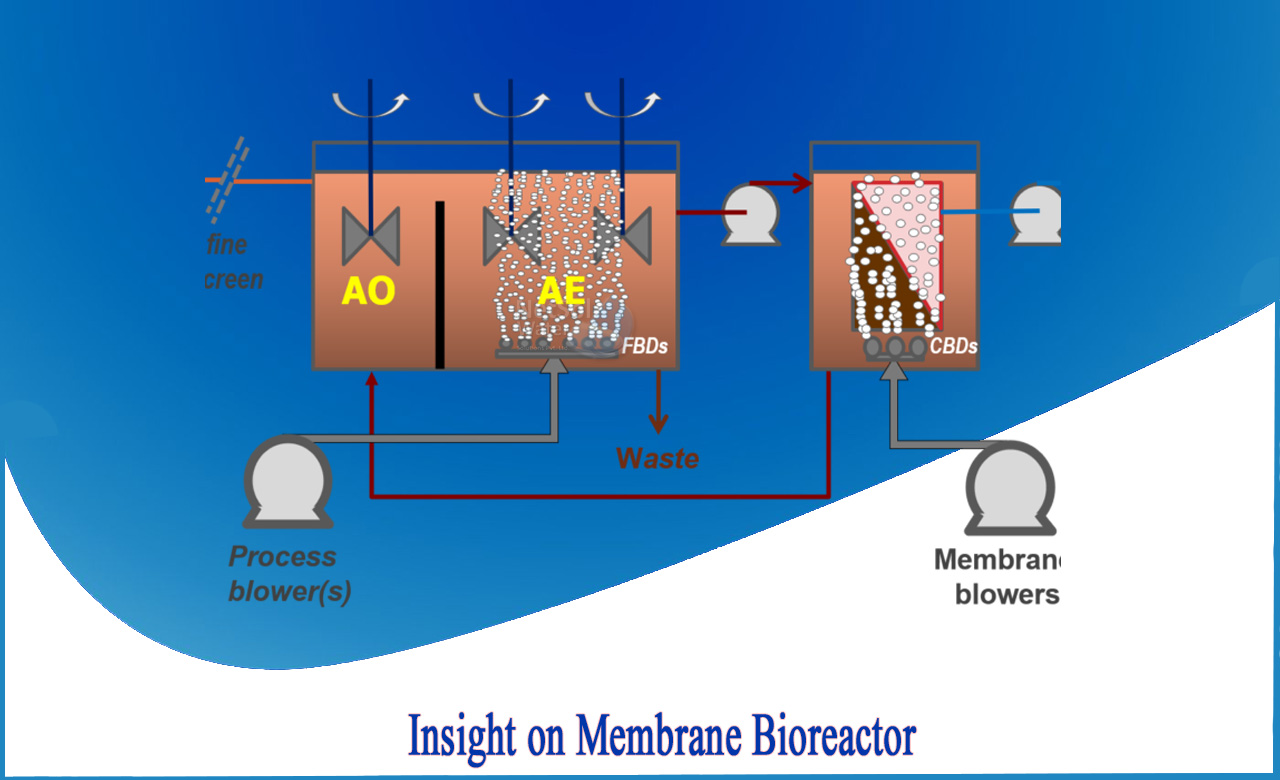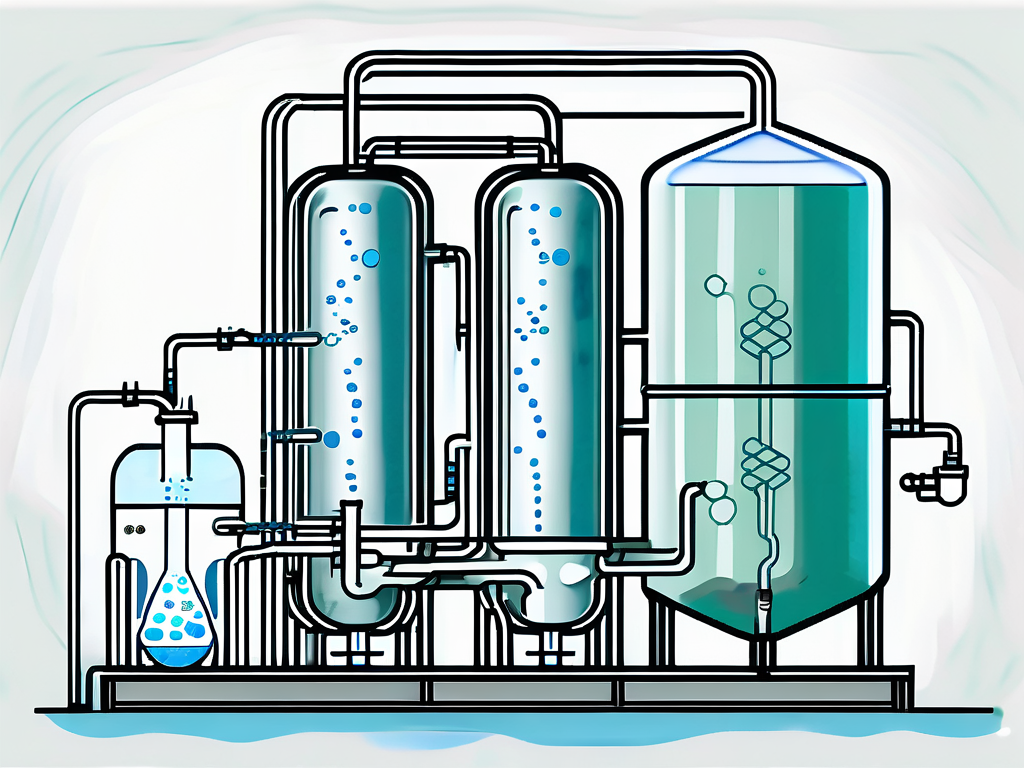How Membrane Bioreactor Contributes to the Reduction of Energy Consumption in Water Treatment
How Membrane Bioreactor Contributes to the Reduction of Energy Consumption in Water Treatment
Blog Article
Membrane Layer Bioreactors Clarified: Efficient Solutions for Clean Water
Membrane layer bioreactors (MBRs) have actually become an advanced option for addressing journalism difficulties of wastewater therapy. By incorporating organic processes with advanced membrane filtering, MBRs not just boost the top quality of cured water but likewise decrease the spatial needs of therapy centers. As environmental issues magnify, the function of MBR modern technology in advertising lasting water monitoring comes to be significantly substantial. However, the intricacies of their procedure, benefits, and prospective applications warrant a closer assessment to completely comprehend their influence on the future of water treatment.

What Are Membrane Bioreactors?
Membrane bioreactors (MBRs) are innovative wastewater treatment systems that integrate organic destruction processes with membrane purification modern technology. This assimilation permits the efficient removal of impurities from water, making MBRs a favored choice in numerous applications, including municipal wastewater therapy and industrial effluent monitoring.

Among the vital advantages of MBRs is their capacity to produce high-quality effluent, commonly suitable for reuse in watering or industrial processes. In addition, MBRs need a smaller sized footprint contrasted to conventional therapy systems, making them perfect for city settings where area might be limited.
Additionally, MBRs can effectively manage differing influent loads and are much less at risk to the effects of hazardous shocks. These characteristics add to their expanding popularity as a sustainable solution for attending to the enhancing need for clean water while decreasing environmental effects.
Just How Membrane Bioreactors Work
While the operation of membrane layer bioreactors (MBRs) might appear complex, it essentially focuses on the synergy between organic procedures and membrane layer filtration. MBRs integrate a biological therapy procedure, generally triggered sludge, with a membrane layer splitting up unit to treat wastewater effectively.
In an MBR system, wastewater is initial presented right into a bioreactor where microorganisms deteriorate raw material and various other pollutants. The organic task minimizes the focus of toxins while advertising the development of biomass. Following this organic therapy, the mixed liquor is subjected to membrane filtration, which can be microfiltration or ultrafiltration, depending on the desired effluent quality.
The membranes act as a physical barrier, allowing water and small solutes to pass while retaining suspended solids and bigger particles. This makes it possible for the system to keep a high focus of biomass within the activator, enhancing the treatment efficiency.
Furthermore, the continuous separation of treated water from the biomass promotes a portable style and lessens the footprint of the treatment center. On the whole, the mix of biological degradation and membrane layer purification in MBRs leads to effective and dependable wastewater treatment, making certain high-quality effluent ideal for numerous applications.
Benefits of MBR Technology
Among the crucial advantages of membrane layer bioreactor (MBR) innovation is its ability to generate top notch effluent with a dramatically minimized footprint contrasted to traditional wastewater treatment techniques. MBR systems effectively incorporate biological therapy and membrane purification, leading to superior removal of impurities, including put on hold solids, microorganisms, and natural matter. This capacity results in effluent that usually satisfies or goes beyond rigid governing requirements for reuse and discharge.
In addition, MBR technology enables higher biomass concentrations, which boosts the treatment effectiveness and lowers the needed activator quantity. This portable style is specifically advantageous in city areas where area is restricted. The functional flexibility of MBR try this site systems likewise suggests they can adapt to varying influent high qualities and circulation prices, making them suitable for a large array of applications.
Moreover, the decreased sludge manufacturing linked with MBR processes adds to decrease operational and maintenance expenses. The membranes offer as a physical obstacle, minimizing the risk of blocking and allowing longer functional periods between cleaning. On the whole, the advantages of MBR modern technology make it an attractive solution for sustainable wastewater treatment, attending to both ecological concerns and the demand for efficient source management.
Applications of Membrane Bioreactors
With their convenience and efficiency, membrane bioreactors (MBRs) discover applications across various sectors, including local wastewater treatment, industrial processes, and even water recovery. In community settings, MBRs provide a small solution for treating wastewater, properly removing impurities while concurrently generating top notch effluent that meets rigid regulative standards. This makes them especially suitable for areas with limited area.
In commercial applications, MBR modern technology is utilized for dealing with procedure water, particularly in industries such as food and drink, drugs, and petrochemicals. These sectors benefit from MBRs' capacity to take care of high organic loads and their performance in recovering valuable resources from wastewater, check over here such as nutrients and water.
In addition, MBRs play a crucial role in water improvement campaigns, enabling the reuse of dealt with wastewater for irrigation, commercial procedures, or also as drinkable water after further treatment (Membrane Bioreactor). Their efficiency in eliminating virus and toxins makes them a trustworthy option for ensuring water high quality in different reuse applications
Future of Water Therapy Solutions
The future of water treatment remedies is poised for transformative advancements driven by technical technology and raising environmental understanding. As global water scarcity becomes a pushing problem, new methods, including membrane bioreactor (MBR) systems, are established to play a critical role in enhancing the performance and sustainability of water treatment processes.
Arising technologies such as expert system and equipment learning are anticipated to optimize treatment operations, permitting for real-time tracking and anticipating upkeep. This will improve the general dependability and efficiency of water therapy centers. Improvements in membrane layer products, such as graphene and nanofiltration, assure to raise permeation prices and minimize fouling, leading to reduced power usage and functional costs.
Additionally, the assimilation of renewable resource sources into water therapy plants will certainly add to greener techniques. The round economy model will certainly additionally obtain traction, encouraging the healing of valuable resources from wastewater, such as nutrients and power.
Verdict

Membrane bioreactors (MBRs) have emerged as a sophisticated solution for attending to the pressing difficulties of wastewater treatment. By incorporating biological processes with innovative membrane layer filtering, MBRs not only boost the top quality of cured water however also decrease the spatial requirements of treatment facilities.One of the vital advantages of membrane bioreactor (MBR) innovation is its capability to produce high-quality effluent with a substantially reduced footprint contrasted to conventional wastewater therapy approaches.With their versatility and efficiency, membrane layer bioreactors (MBRs) discover applications throughout numerous markets, consisting of local wastewater therapy, commercial processes, and even water recovery.In final thought, membrane bioreactors represent a substantial development in wastewater treatment modern technology, incorporating organic processes with efficient membrane layer filtration to produce high-quality effluent.
Report this page